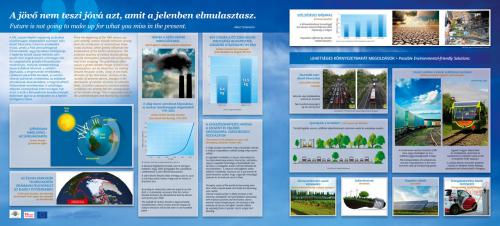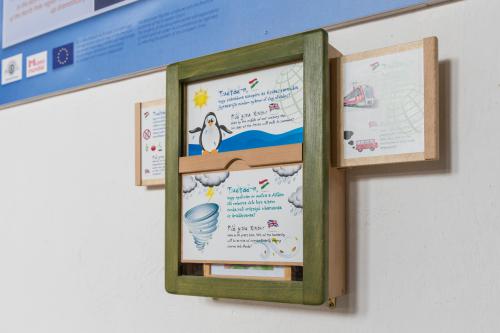How to do it step by step
1st Step:
Choosing the topic and an installation fit for purpose
We, once again, looked for a topic with some connections to railway transportation and to the MDGs. The increasing prominence of climate change and the resulting anomalies in the weather, gave us the idea of addressing the issue of global warming and air pollution. We designed an exhibition board that hangs on the wall and, as an interactive element, a wooden box in which interesting questions and answers on the subject are hidden and which is suitable for use by children.
2nd Step:
Collecting materials
The Clean Air Action Group, one of Hungary’s top research bodies, helped us greatly by providing their previous studies. In addition, we read a number of studies on the internet and compared these with data on carbon dioxide emissions from railway transportation.
3rd Step:
Preparing the plan
The biggest difficulty we faced was selecting appropriate materials from the vast amount of information available and presenting the data on the board in a way that even children could understand. Furthermore, we had to find a graphic designer and a printing contractor to implement our ideas.
4th Step:
Designing and manufacturing the interactive tool
The idea to create a wooden box as an interactive element in the installation came from the Hungarian Tale Museum. We contacted the fabricator of the original wooden box and asked him for a quote, and then we planned our final version.
5th Step:
Production of the graphics
Involving the graphic designer in the process, we planned the exhibition board for the installation.
6th Step:
Printing production
After finalizing the graphic design, we sent it to a printing house. They then made our exhibition board and delivered it to the Railway Museum.
7th Step:
Installing it in the museum
Museum staff members fixed the exhibition board to the wall of the Orient Hall of the Museum. Next to it, the interactive wooden box, packed with curiosities and data about the greenhouse effect and air pollution, was placed





















